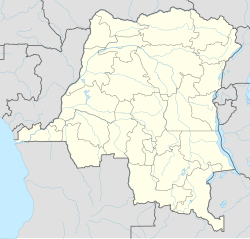This article needs additional citations for verification .(February 2022) |
| Kapani Tonneo | |
| Formation | 1976 |
|---|---|
| Type | rocket launch site |
| Coordinates | 7°55′26″S28°32′10″E / 7.9239844°S 28.5360758°E |
| Owner | OTRAG |
Shaba North (also mentioned as Kapani Tonneo) [1] [2] was the launch site of the first rockets launched by Orbital Transport und Raketen AktienGesellschaft, or Orbital Forwarding Company in English ("OTRAG"). [3] [4] [5]
Contents
It is located at the edge of a mesa in Shaba (now Katanga province), the Democratic Republic of Congo. [6] In 1976 Luvua Airport was built to supply the site. [7] [8] [9]
In 1977 and in 1978 three test flights of OTRAG rockets were launched from Shaba North. [1] [10]
In 1979 OTRAG stopped launching rockets from Shaba North after pressure from the Soviet Union, whose leaders were concerned about German interests obtaining powerful long-range rockets. [2] Its launching activities were later moved to Sabha, Libya.
